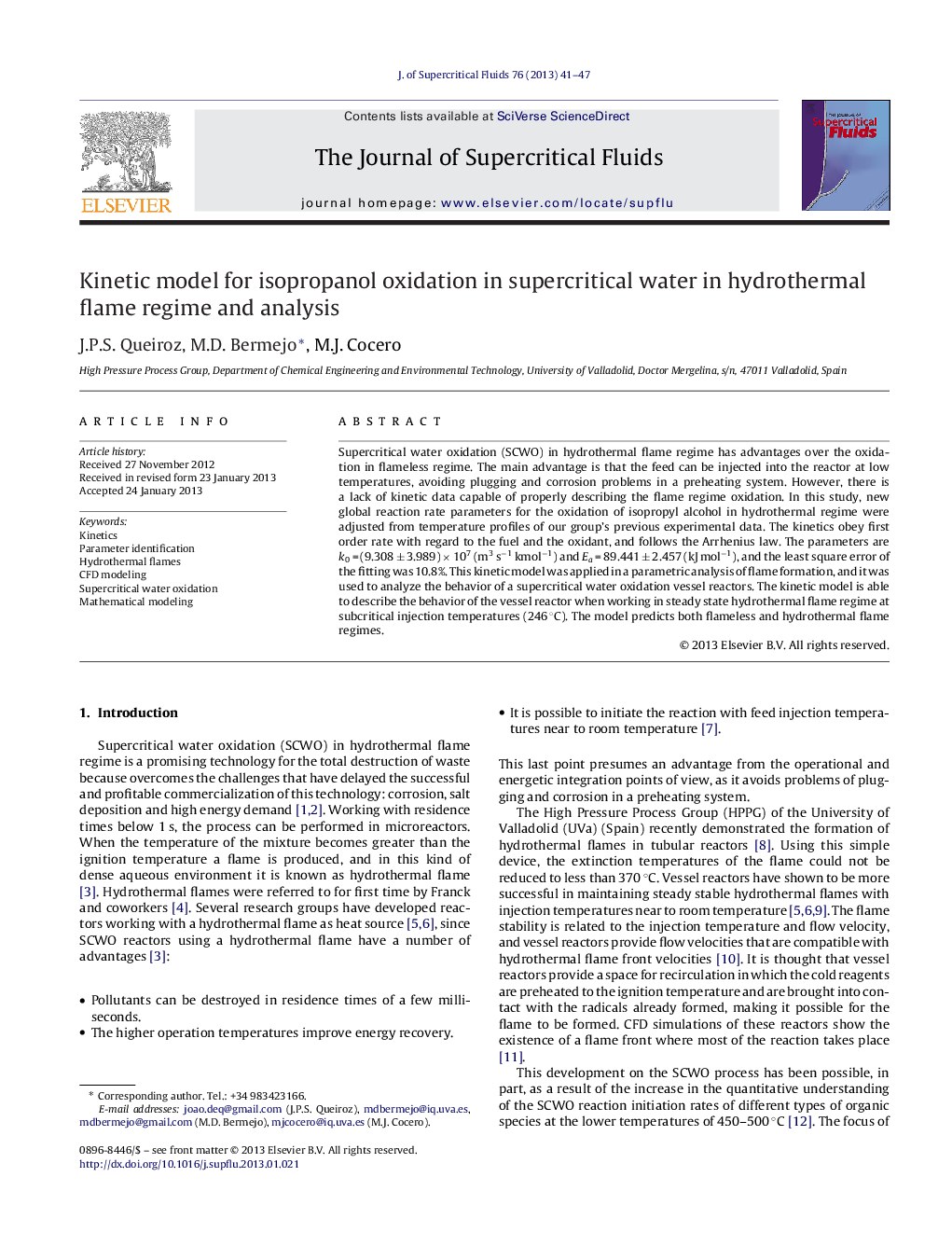| Article ID | Journal | Published Year | Pages | File Type |
|---|---|---|---|---|
| 230866 | The Journal of Supercritical Fluids | 2013 | 7 Pages |
Supercritical water oxidation (SCWO) in hydrothermal flame regime has advantages over the oxidation in flameless regime. The main advantage is that the feed can be injected into the reactor at low temperatures, avoiding plugging and corrosion problems in a preheating system. However, there is a lack of kinetic data capable of properly describing the flame regime oxidation. In this study, new global reaction rate parameters for the oxidation of isopropyl alcohol in hydrothermal regime were adjusted from temperature profiles of our group's previous experimental data. The kinetics obey first order rate with regard to the fuel and the oxidant, and follows the Arrhenius law. The parameters are k0 = (9.308 ± 3.989) × 107 (m3 s−1 kmol−1) and Ea = 89.441 ± 2.457 (kJ mol−1), and the least square error of the fitting was 10.8%. This kinetic model was applied in a parametric analysis of flame formation, and it was used to analyze the behavior of a supercritical water oxidation vessel reactors. The kinetic model is able to describe the behavior of the vessel reactor when working in steady state hydrothermal flame regime at subcritical injection temperatures (246 °C). The model predicts both flameless and hydrothermal flame regimes.
Graphical abstractFigure optionsDownload full-size imageDownload as PowerPoint slideHighlights► Kinetic model for hydrothermal flame isopropanol oxidation was adjusted. ► There is no previous kinetic model for hydrothermal flame oxidation. ► Model is in accordance with hydrothermal flame ignition reports. ► Kinetic model improved the results of modeling a complex reactor.
